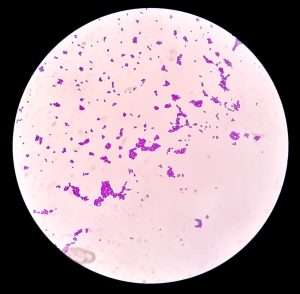Deadly Fungus Spreading In US : A man in Pierce County, Washington, has been diagnosed with Candida auris (C. auris), a multidrug-resistant fungus that can cause serious infections. This marks the first locally acquired case in the state. The patient, who had spent about six weeks at St. Joseph Medical Center in Tacoma, tested positive during an admission screening at Kindred Hospital Seattle – First Hill. The Centers for Disease Control and Prevention has reported 5,654 infections of C. auris across the U.S. since 2013. The Washington State Department of Health issued a health alert on July 18.
First Locally Acquired Case of Multidrug-Resistant Fungus Detected in Washington
A man from Pierce County, Washington, was diagnosed on July 13 with colonization due to Candida auris (C. auris), a multidrug-resistant fungus that can cause severe infections. This marks the state’s first locally acquired case of the dangerous fungus.
You may also like to watch : Who Is Kamala Harris? Biography - Parents - Husband - Sister - Career - Indian - Jamaican Heritage
1. A deadly fungal infection is spreading through the US at an “alarming rate”, the CDC says.
One in three people infected with the Candida Auris fungus dies, the centre adds. pic.twitter.com/TNAjYBLen7
— BFM News (@NewsBFM) March 22, 2023
You may also like to watch: Is US-NATO Prepared For A Potential Nuclear War With Russia - China And North Korea?
Understanding C. auris Colonization
Unlike an infection, which is the replication of an organism in host tissue that can cause diseases, colonization refers to the presence of a microorganism within a host. The organism can multiply and grow within the host but without any interaction between the host and the organism. This means colonized patients can carry and spread C. auris even if it’s not making them sick.
Deadly Fungus Spreading Across the U.S.
C. auris is a type of yeast that can cause severe illness, especially in those suffering from serious medical conditions who have spent time in hospitals — particularly ICUs — and nursing homes. Approximately every 1 in 3 patients with a C. auris infection dies, according to the Tacoma-Pierce County Health Department.
Case Details and Spread of C. auris
The man diagnosed with C. auris was a patient at St. Joseph Medical Center in Tacoma for approximately six weeks before going to Kindred Hospital Seattle – First Hill, where he tested positive during an admission screening. From 2013 through 2022, the Centers for Disease Control and Prevention (CDC) reported 5,654 infections of C. auris across the U.S., including cases in Oregon, California, and other Western states.
Healthcare Response to C. auris
“Screening for contagious diseases helps healthcare and public health find infections early to help limit the spread,” Nigel Turner, Division Director for Communicable Disease Control, said in a prepared statement. “It is a critical step to protect the public. We prepare for this and other diseases to ensure we and our healthcare partners can respond quickly and effectively.”
Washington State Department of Health Issues Health Alert
The Washington State Department of Health (DOH) issued a health alert on July 18. “Based on known details, we believe that this case of C. auris was acquired in Washington,” DOH wrote in a public address. “WA DOH and partner local health jurisdictions are working with involved facilities to assess and optimize infection prevention practices and to perform screening of other patients to identify if transmission has occurred. Public Health is making this announcement to strongly encourage all healthcare facilities to optimize infection prevention practices and to prepare for safely admitting and caring for patients infected or colonized with C. auris.”
The emergence of this multidrug-resistant fungus in Washington underscores the importance of robust infection prevention practices and early detection to limit its spread. Healthcare facilities are urged to prepare for the possibility of more cases and to ensure the safety of all patients.
FAQ’s
What fungal infection is spreading in 2023?
In 2023, there is a pressing concern regarding the rapid spread of a fungal infection called Candida auris. The U.S. Centers for Disease Control and Prevention (CDC) has brought attention to this alarming situation, as the fungus is causing illnesses and fatalities among hospitalized patients nationwide. Candida auris has become a significant threat, necessitating immediate action to prevent further transmission and protect vulnerable individuals.
Candida auris is a formidable superbug that severely challenges healthcare facilities. Its ability to spread rapidly in hospitals and nursing homes has raised concerns about patient safety and effective infection control measures. Medical professionals work tirelessly to understand and contain this outbreak, but its resistance to commonly used antifungal medications makes treatment and control efforts more difficult.

What fungal infection is spreading in 2023?
What is the fungus in nursing homes in 2023?
As 2023 unfolds, nursing homes in the United States grapple with a troubling Candida auris outbreak. This fungal superbug, which has been spreading rapidly through hospitals, has now found its way into nursing home facilities, posing a considerable threat to elderly residents.
The presence of Candida auris in nursing homes is especially concerning due to the vulnerability of the elderly population. With weakened immune systems, they are more likely to contract severe and life-threatening infections. Healthcare authorities and nursing home staff must implement stringent infection control protocols to prevent further transmission and safeguard the health and well-being of the residents.

What is the fungus in nursing homes in 2023?
What is the fungal infection sweeping the U.S.?
Candida auris is wreaking havoc as a deadly fungus sweeping through hospitals across the United States. Although the fungus was discovered relatively recently, merely 15 years ago, it has rapidly become one of the most dreaded hospital-acquired infections worldwide.
The drug-resistant nature of Candida auris makes it an exceptionally challenging adversary for healthcare professionals. Conventional antifungal treatments have proven ineffective against this superbug, leading to grave concerns about its unchecked spread in healthcare settings. Hospitals are on high alert, implementing strict preventive measures and surveillance to contain this deadly fungus and protect patients from its dire consequences.

What is the fungal infection sweeping the U.S.?
What is the untreatable fungus spreading in two hospitals?
U.S. health officials have recently sounded the alarm about an untreatable fungus spreading in two hospitals and a nursing home in 2023. Candida auris, the dreaded superbug, has caused “superbug” outbreaks in a Washington, D.C., nursing home and two hospitals in the Dallas area, as reported by the Centers for Disease Control and Prevention.
The emergence of an untreatable fungus poses significant challenges for healthcare professionals. Candida Auri’s resistance to antifungal medications makes traditional treatment ineffective, and the infection can be life-threatening, especially for patients with compromised immune systems. Medical facilities must adopt aggressive infection control measures and collaborate with health authorities to prevent further spread of this deadly fungus.

Deadly Fungus Spreading In Us
What is the CDC’s warning about new fungal infections?
The Centers for Disease Control & Prevention (CDC) issued a grave warning in 2023 about the emergence of Candida auris (C. auris) as a new health threat. This drug-resistant fungus has become a significant concern, particularly for individuals hospitalized with compromised immune systems.
Candida auris infections can lead to severe and life-threatening consequences for vulnerable patients. The CDC urges healthcare facilities to remain vigilant and implement rigorous infection control measures to prevent further transmission. Heightened awareness and rapid response are essential to containing the spread of this emerging fungal infection and safeguarding the well-being of those at risk.




